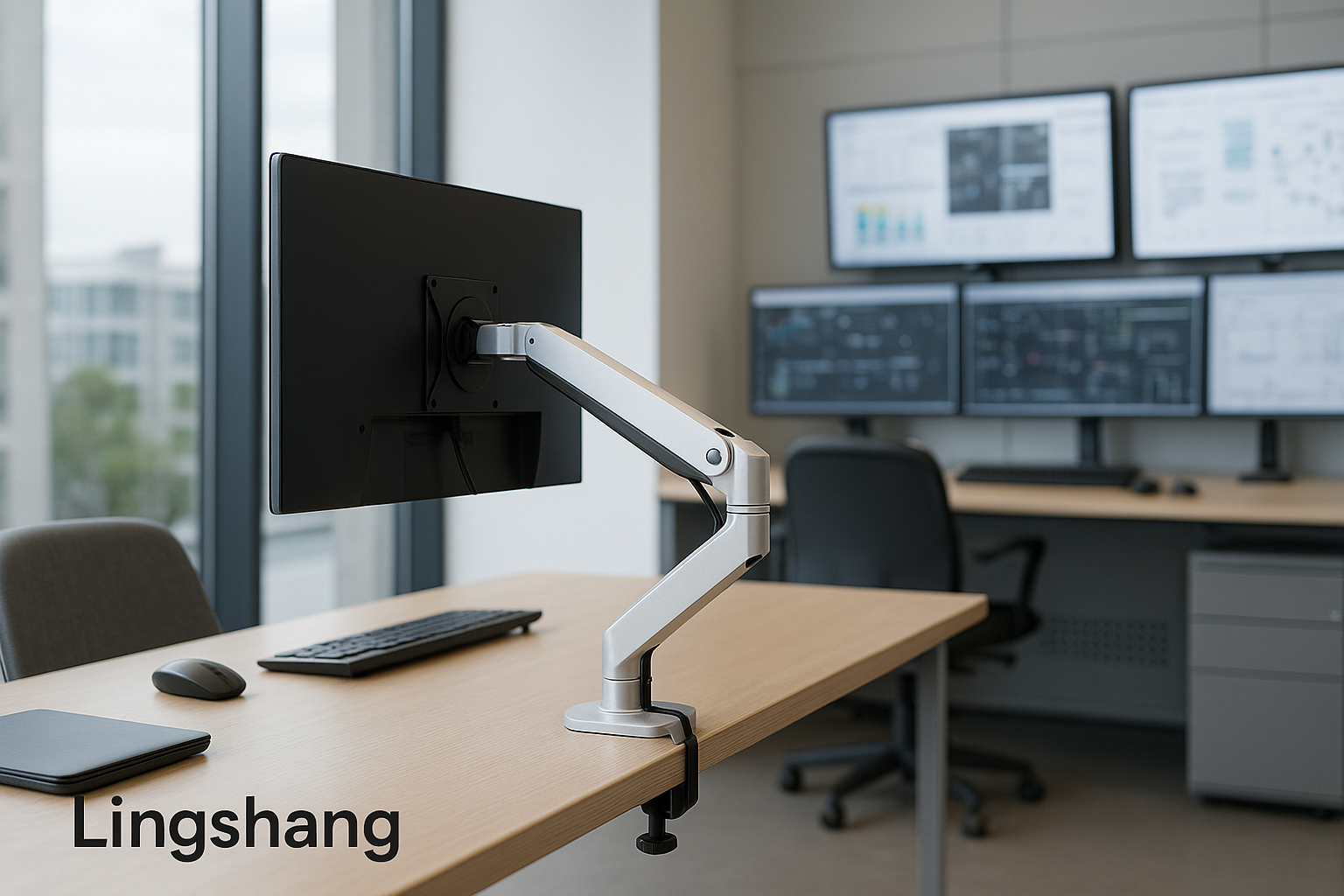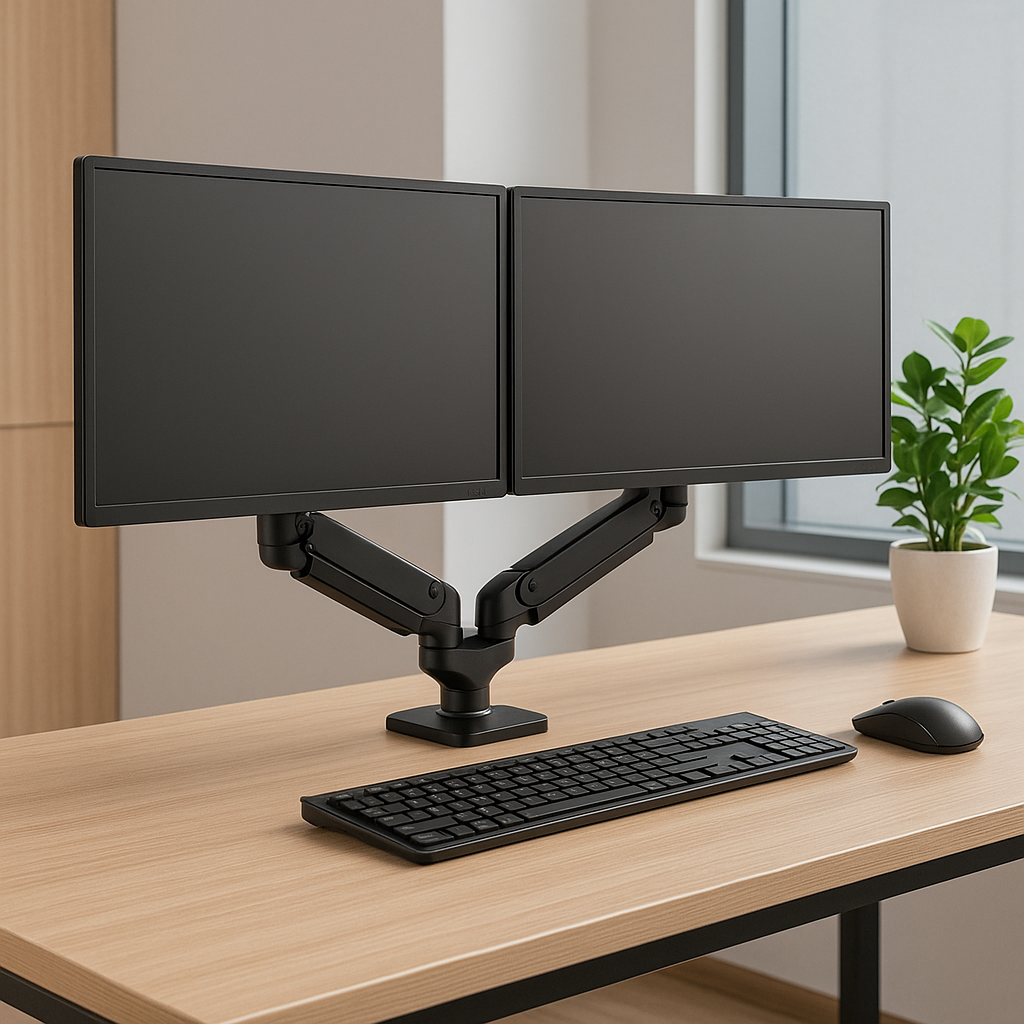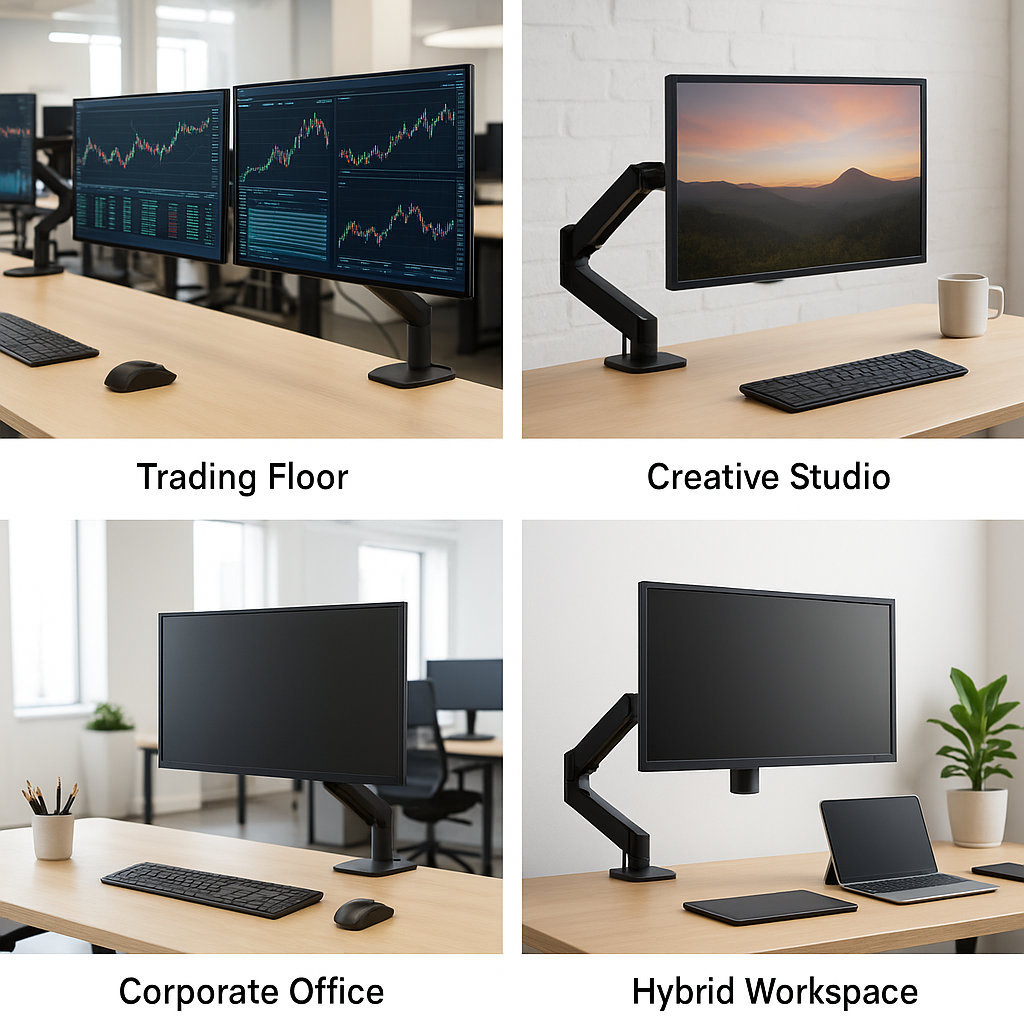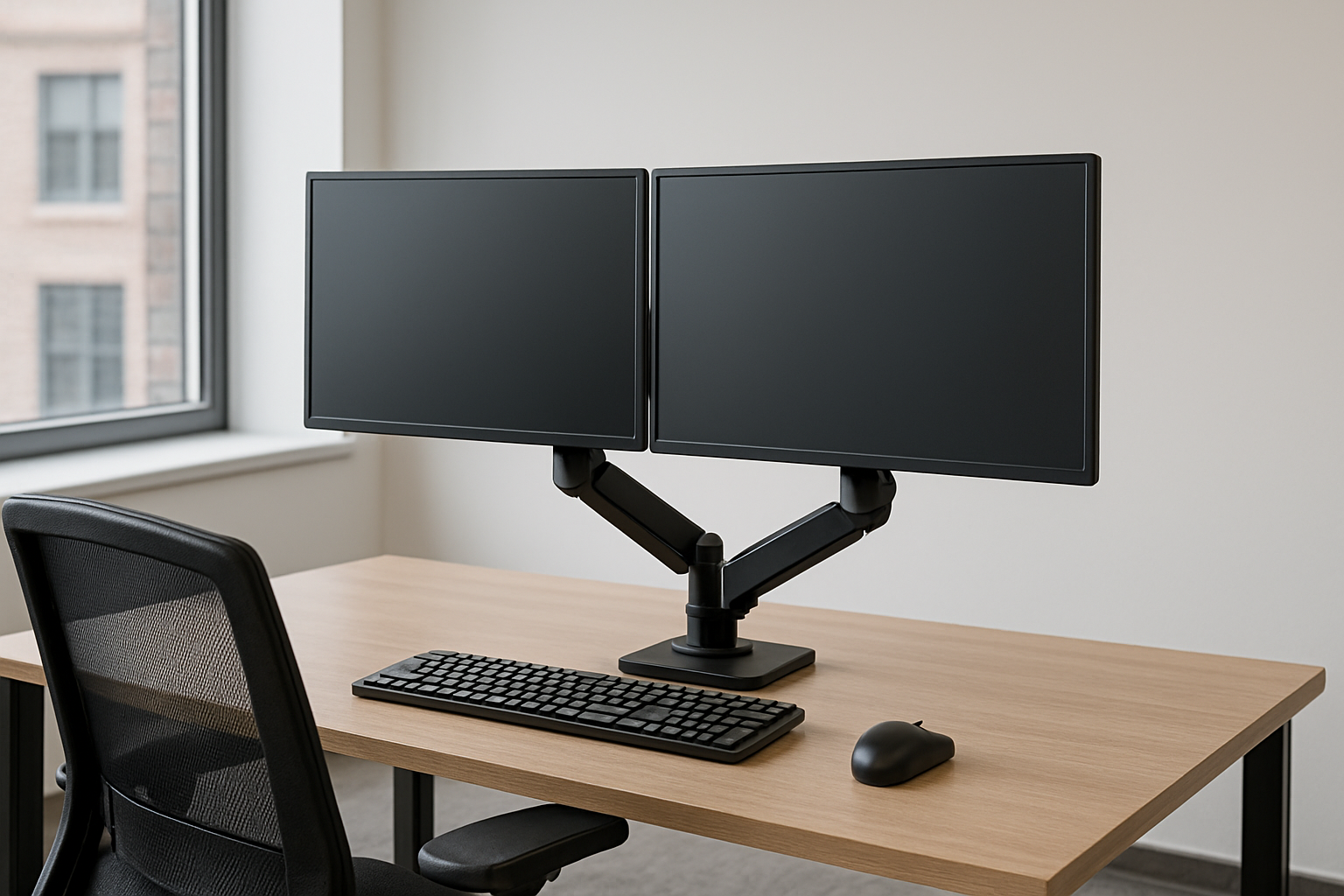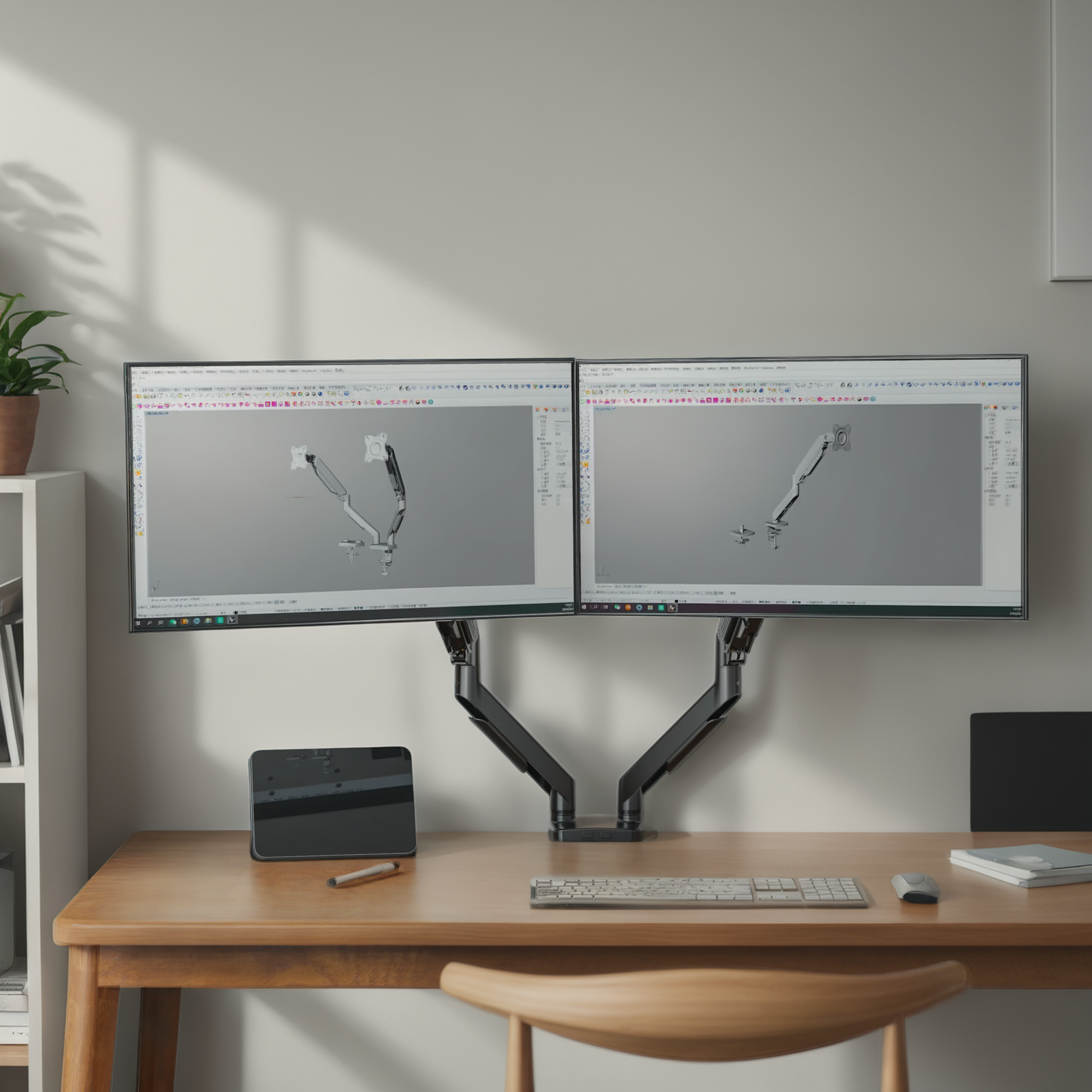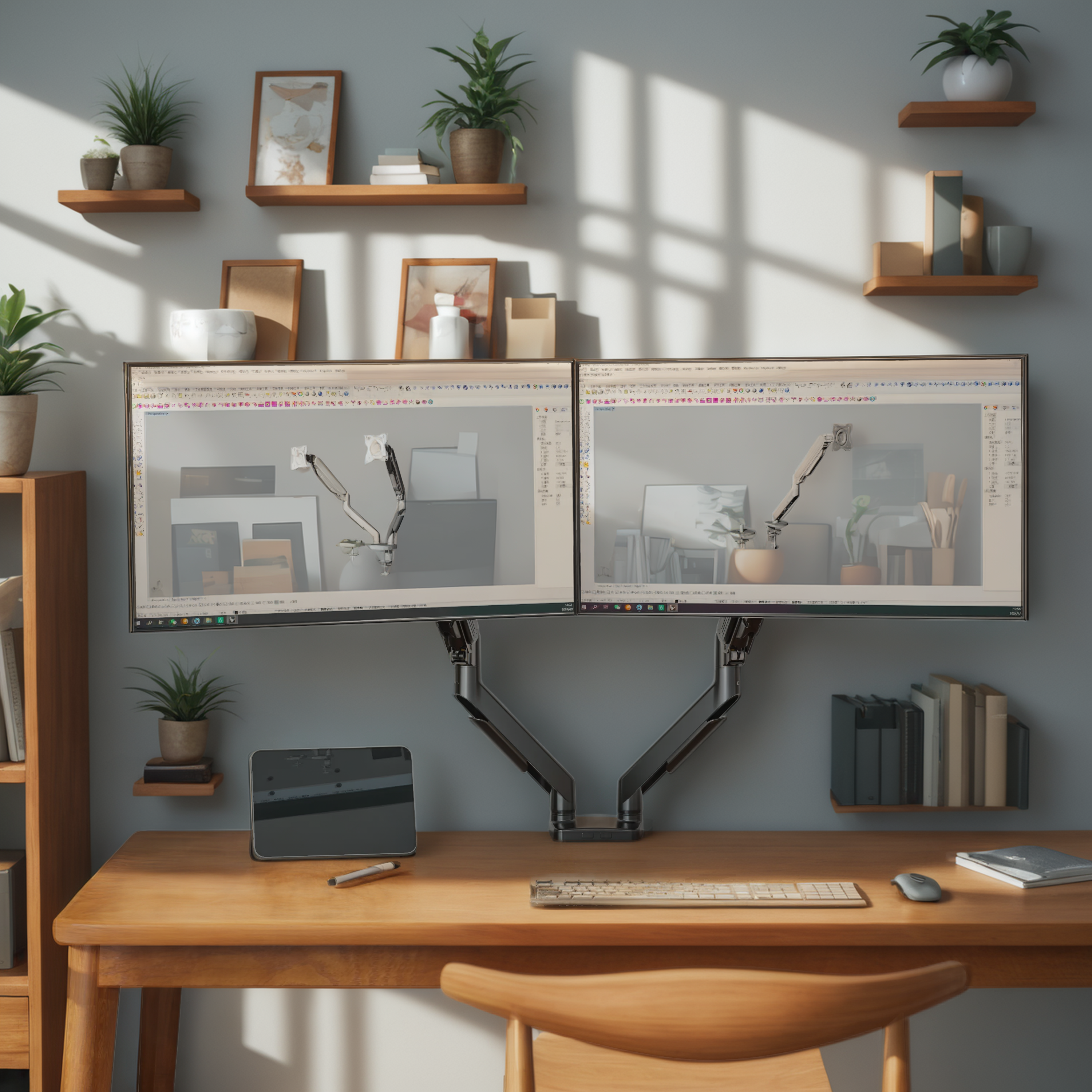
How to Future-Proof Your Workspace with a Flexible Monitor Mount
For many professionals, a monitor stand is a quick solution to improve posture or desk aesthetics. But when job demands shift—like taking on dual screens, switching workspaces, or needing higher screen adjustability—a fixed or undersized mount quickly becomes a limitation.
This article helps you think long-term: How do you choose a monitor mount that doesn’t just fit today, but continues to workas your job evolves?
Problem: Work Evolves Faster Than Your Hardware
The Real Frustration
You’re promoted to a team lead and now need two displays. Or you're part-time remote and realize your home desk isn’t ergonomic enough.
Up to 62% of workers in hybrid roles report discomfort due to inconsistent setups between home and office (Source: Steelcase Research 2023).
Outdated mounts that can’t support extra monitors, proper height, or variable screen sizes often lead to:
-
Neck and shoulder pain
-
Time wasted re-adjusting
-
Financial waste on repeated upgrades
Feature to Look For: Modularity and Expandability
If you're using one screen today, plan for two tomorrow.
-
Choose monitor arms withdetachable dual mountsor upgradable extensions
-
Confirm your mount’sVESA patternsupports various screen types
-
Check maximumload-bearing capacityto future-proof for heavier ultrawide displays
Look for designs withtool-free assembly, so future changes don’t require professional help.
Scenario: Changing Work Locations
For hybrid professionals or freelancers, switching between office and home desks is common—but few mounts are built for that.
-
A mount that works on boththin and thick desktops(clamp size range matters)
-
Compact arm base designs that fitsmaller desks
-
Fast detachability without drilling or permanent damage
lingshang monitor armsare designed with portability and wide clamp compatibility—ideal for adaptable desk setups.
Scenario: Transitioning into Multi-Role Work
Designers who become editors. Marketers managing dashboards. Engineers coding and presenting side-by-side.
As your workflow gets more complex, your screen layout will too.
-
Dual-arm systems let you rotate or stack screens
-
Long-reach arms accommodatecurved or wide displays
-
Smooth vertical adjustment supportssitting and standing modes
According to the Journal of Human Factors, dual-screen setups can improve multitasking speed by up to 35%.
What You Might Overlook: Long-Term Ergonomics
It’s easy to think any stand will do—until daily fatigue sets in.
-
If your monitor isn’t eye-level,forward head posture develops
-
Limited tilt or swivel restrictsnatural neck movement
-
Poor cable routing leads to clutter and distraction
Ergonomic designs withfluid motion,cable clips, and360° adjustabilityare not just premium add-ons—they’reessential.
Choosing Smart Now Saves Costs Later
Professionals often underestimate how fast their work setup needs change. A $30 static riser might seem enough—until
Industry data shows that professionals who upgrade to fully adjustable mounts are 50% less likely to replace their gear within a year (BIFMA 2022).
Make a Smarter Workspace Investment
Don’t settle for what works today—invest in a setup that’s built for tomorrow.
Explore adaptable monitor solutions on ourhomepage.
Need guidance for your specific work scenario?Visit our Contact Us pageto talk to our support team.

